 Floriane Eznack is the perfect oenologist for the Champagne Jacquart House, arrived in Champagne with the passion to “create wines, not sell them or grow grapes.” Floriane represents the bold company, with a history considerered almost brazen by most standards. The daughter of a diplomat, this young lady’s childhood passion was “to become a fighter pilot,” in her words. “So you know I am tough.”She wears her fashionable cropped hair, a short chic dress and charm easily, the epitome of a determined French woman.
Floriane Eznack is the perfect oenologist for the Champagne Jacquart House, arrived in Champagne with the passion to “create wines, not sell them or grow grapes.” Floriane represents the bold company, with a history considerered almost brazen by most standards. The daughter of a diplomat, this young lady’s childhood passion was “to become a fighter pilot,” in her words. “So you know I am tough.”She wears her fashionable cropped hair, a short chic dress and charm easily, the epitome of a determined French woman.
“We can’t make any mistakes in the blending,” she reported, because when it is done it cannot be changed. The aging may lend to its complexity but the blend gives the champagne its style.” And the style is one of elegance, just as it is in the mousse, the mass of tiny bubbles that forms on the top of a glass of champagne or sparkling wine. Champagne Jacquart possess a wonderful creamy mousse of small, compact bubbles.

Floriane’s mission on behalf of Champagne Jacquart House is not only to blend the champagnes as an oenologist, but to introduce the champagnes as a drink to be relished “on any day or for any get together,” not just special occasions, as their world ambassador. In a way, drinking champagne on echoes the essence of the company to break break tradition. It can also be healthy: A study just released advocated drinking one to three glasses of champagne a week because this can help prevent dementia and Alzheimer’s disease, according to a new study.
The story of Champagne Jacquart House began in 60’s during a period of significant social and political upheaval in France. Paralleling that change, 30 wineries from the famous Champagne region embarked on an extraordinary adventure for the first time in history, pooling their expertise and exceptional vineyards together to offer wine lovers a high quality brand of champagne without going through a middleman. What may have seemed idealistic at the start became a real success story. Fifty years later, today’s results show why Jacquart has become one of the leading international Champagne brands.
Floriane startled most of the guests (including me) at a tasting by recommending that champagne is best enjoyed in a wine glass with a wider than a traditional flute. Below, Alain Gayot, Editor-Publisher of Gayot Publications, savors the nose of the champagne in both a flute and a glass.

Jacquart Champagne Brut “Mosaique” NV is a very stylish and grown-up Champagne, described as a mosaic of shalk reflecting the terroir of champagne. The contemporary art image symbolizes the poise and free spirit of the house.
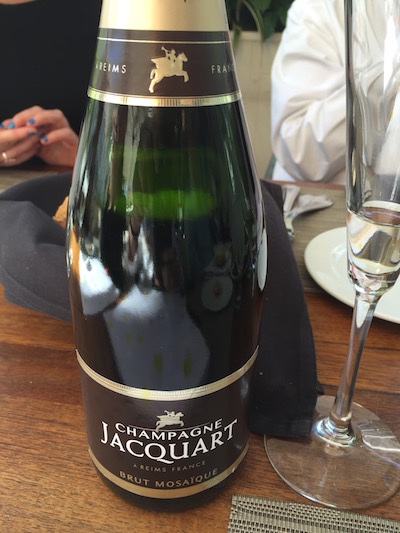
Inspired by the unique style of the photographer Isabelle Bonjean, Mosaigue has with a light golden color and small, even bubbles. It is made up of 50% Chardonnay, 35% Pinot Noir, 15% Pinot Meunier. It is described as having a dominant note of lemon and crisp apple fruit on the nose, with just a touch of yeast and cashew. On the palate the mousse is rolling and full, and this champagne is assertive with bold herbal and citrus fruit that sets the mouth watering. A softer, pillowing breadth takes over while the wine stays very focused and savory, with balanced weight and texture, as well as a cutting acidity that really sharpens the finish.
The Ocean Prime Executive Chef, Matthew Briggs, paired Mosaique with Sonoma Goat Cheese Ravioli with Golden Oak Mushrooms.

Blanc de Blancs Vintage Chardonnay is singular in the varied origins of the grapes among the Jacquart brand. The Blanc de Blancs allies the nobility fine origin of chardonnay with exceptional quality vintage. Chardonnay Grapes, ripened to perfection, are harvested from Jacquart’s grands crus vineyards on the Côte des Blancs (Chouilly, Avize) and premiers crus vineyards (including Villers-Marmery). The color is a sparkling, brilliant, straw gold. Very lively with good persistent mousse. The nose is a cherry blossom, vanilla and white pepper mingling with notes of still-warm butter brioche.

Blanc de Blancs Vintage flavor is described as being at first fresh and light, followed by an explosion of mouthwatering flavors with white peaches and citrus notes in abundance. It has a very long, light, elegant finish.
Blanc de Blanc pairs beautifully with seafood and fish – especially freshwater varieties in a light sauce and even a plate of oysters, or a selection of fresh goat’s cheese. The chef paired it with California oysters from Kumai-Moro Bay.

The Rose Champagne was paired with Teriyaki Salmon with Shitake Sticky Rice and Soy Butter Sauce. The fresh, acidic taste of the champagne holds up to the hearty, fatty fish. It is also a wonderful champagne to pair with robust Indian dishes.
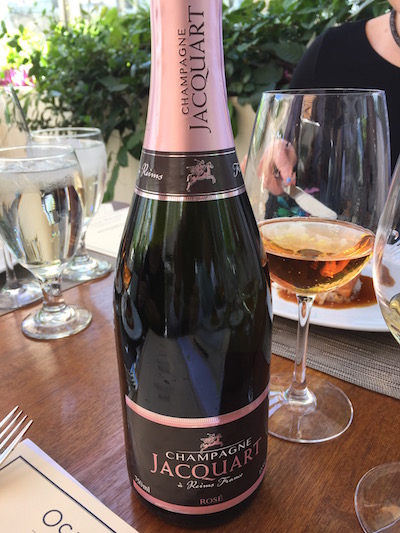

Launched in 2013, this vintage champagne, requires the longest aging. It also expresses the particular character of a year and its climate in Champagne. As the flagship of Maison Jacquart, it demands the utmost respect for its raw materials of grapes, as well as production techniques. The special foil and label at the neck, alone, require full time laborers who complete five bottles every hour. The champagne sells for $100 a bottle.
Floriane explained, “To make this cuvée, it takes imagination, meticulous care… and time.” The Cuvee was paired with a Sea Scallop with Parmesan Risotto, English Peas and a Citrus Vinaigrette.

The term “Cuvée” the best of the best from the Champagne region of France. The vintage 2006 Cuvee stands out by its grape varieties – only the two most noble Champagne varieties in equal shares. The Chardonnay grapes come from villages that are classified as Premiers Crus. As for the Pinots Noirs, they are exclusively from the Mailly and Verzenay Grands Crus on the Montagne de Reims.
It takes six years for the bold, modern aromas of this cuvée to develop and gain in complexity in the Champagne Jacquart cellars. It can also can be stored for several years.
The exciting history behind the company is about brave Champagne growers’ efforts in the early 60’s to control their own destiny rather than relying on the big Grande Marque houses as a route to market. The small group of growers also realized that in order to build their own businesses in a sustainable way, they needed to launch their own Champagne instead of supplying grapes directly to the Grande Marques or the to the negociant middlemen. A négociant is the French term for a wine merchant who assembles the produce of smaller growers and winemakers and sells the result under its own name. Négociants buy everything from grapes to grape must to wines in various states of completion)
The site was set with 2,400 hectares, a mosaic of crus, 7% of the Champagne appellation, a unique style. The Champagne Jacquart brand was subsequently released for the first time in 1962 and the ‘Mosaïque’ label chosen to represent the patchwork of grower families across the region, all joined together with a common vision.
The home of Champagne Jacquart is the stunning Hôtel de Brimont in Reims, situated on the Boulevard Lundy in between Krug and Roederer. Today there are 1,800 winegrowers dedicated to this venture (www.champagne-jacquart.com).








 There are Uthappam (very large, fermented rice and lentil pancakes), that are layered with veggies, such as peas, carrots, onions and/or chilies and folded over.
There are Uthappam (very large, fermented rice and lentil pancakes), that are layered with veggies, such as peas, carrots, onions and/or chilies and folded over.



 Rarely found Kerala style dishes make up the rest of the menu, including Fish Curry a must-try, signature Kerala dish cooked in savory gravy ($9.95) Fish curry, Avial (as a starter or entre), Kerala a Kerala-style dish of julienne vegetables sautéed with coconut, which has made it onto many local Indian menus. Another famous dish is Vegetable Biriyani, the dish famous of trade spices and also a favorite to the north on the coast.
Rarely found Kerala style dishes make up the rest of the menu, including Fish Curry a must-try, signature Kerala dish cooked in savory gravy ($9.95) Fish curry, Avial (as a starter or entre), Kerala a Kerala-style dish of julienne vegetables sautéed with coconut, which has made it onto many local Indian menus. Another famous dish is Vegetable Biriyani, the dish famous of trade spices and also a favorite to the north on the coast.


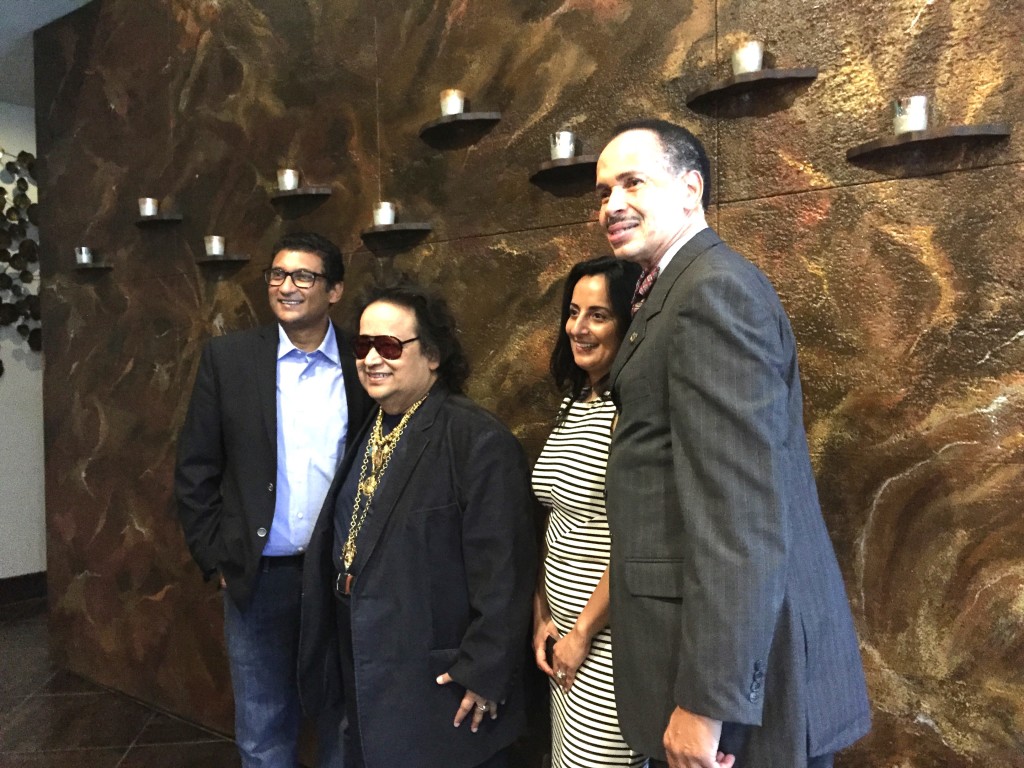

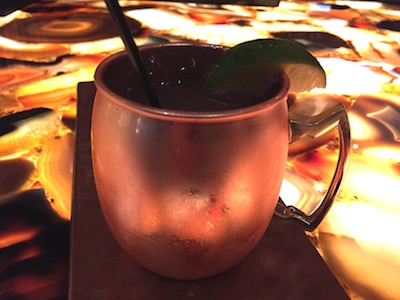




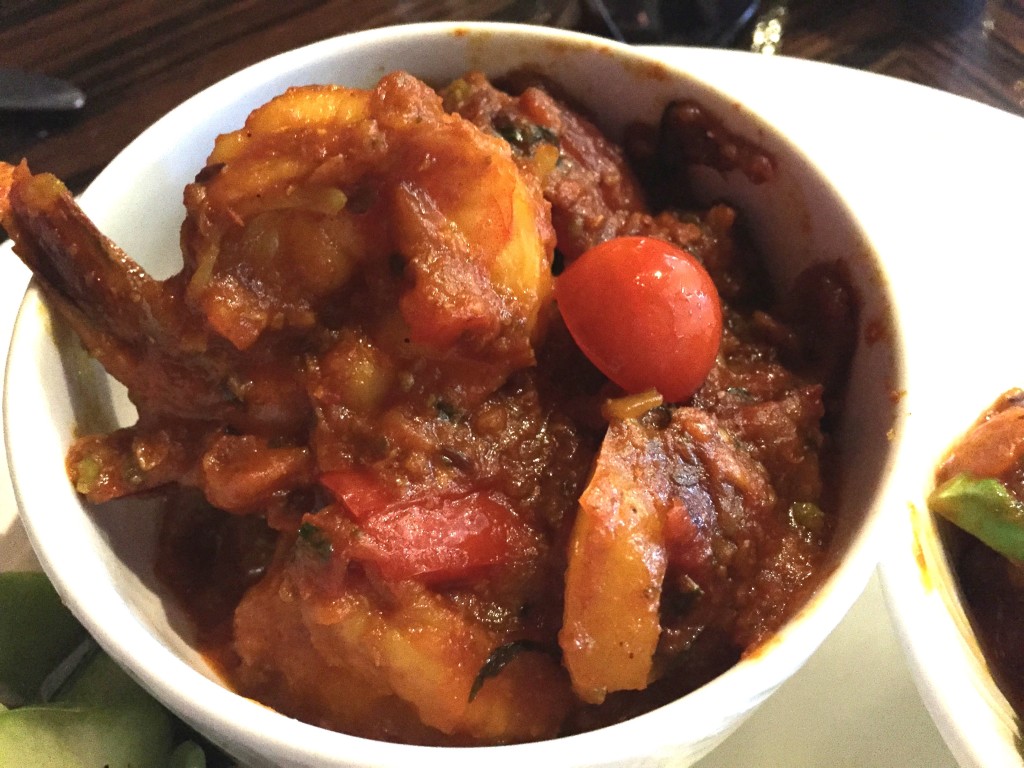

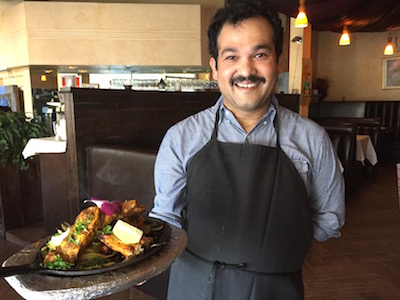
 (Gerry Furth-Sides) Joyous, Chef-owner, Boda Nirouia, renews Gate of India, an old Hollywood mainstay since the 198o’s, with his gift for contemporary Indian cuisine fusion. Chef Boda’s dishes shows a light, deft hand at incorporating fusion elements that elevate the most ordinary Indian dishes. Here radish sprouts, garlic, peas and broccoli plus a slice of citrus bounce the flavors of a rich broth to a new level. An added squeeze of the lemon slice garnish again provides another tart layer of taste.
(Gerry Furth-Sides) Joyous, Chef-owner, Boda Nirouia, renews Gate of India, an old Hollywood mainstay since the 198o’s, with his gift for contemporary Indian cuisine fusion. Chef Boda’s dishes shows a light, deft hand at incorporating fusion elements that elevate the most ordinary Indian dishes. Here radish sprouts, garlic, peas and broccoli plus a slice of citrus bounce the flavors of a rich broth to a new level. An added squeeze of the lemon slice garnish again provides another tart layer of taste. The chef’s background as a trained chef with experience in India’s highly regarded Restaurant and Resort Group, Oberoi, shines through his refined dishes, spiced with an even heat throughout. His Thai Restaurant experience inspires contrasting color hues using sprouts and flowers, for picturesque plating – welcome in the Indian cuisine, filled with robust layers of taste but including lots of brownish stews. Cher Boda’s Nepalese heritage also means an insider’s taste near the border to “authentic fusion” Indo-Chinese dishes.
The chef’s background as a trained chef with experience in India’s highly regarded Restaurant and Resort Group, Oberoi, shines through his refined dishes, spiced with an even heat throughout. His Thai Restaurant experience inspires contrasting color hues using sprouts and flowers, for picturesque plating – welcome in the Indian cuisine, filled with robust layers of taste but including lots of brownish stews. Cher Boda’s Nepalese heritage also means an insider’s taste near the border to “authentic fusion” Indo-Chinese dishes.





 Manchurian dish,” with soy, sweet and sour chilies, and the sweetness of tomato, a fruit after all. Textures and color from the peppers add interest. And in this dish, basil is the main herb honored. So tomato and basil, for sweet and sour, all elements familiar to the universal palate are the base of the dish.
Manchurian dish,” with soy, sweet and sour chilies, and the sweetness of tomato, a fruit after all. Textures and color from the peppers add interest. And in this dish, basil is the main herb honored. So tomato and basil, for sweet and sour, all elements familiar to the universal palate are the base of the dish.

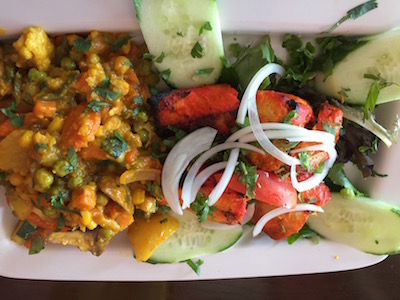
 dish of the lightest, long grain Kasmiri Rice. The cherry on top signified the fruit and other exotic touches influenced by the regal Persian occupiers of the area.
dish of the lightest, long grain Kasmiri Rice. The cherry on top signified the fruit and other exotic touches influenced by the regal Persian occupiers of the area.










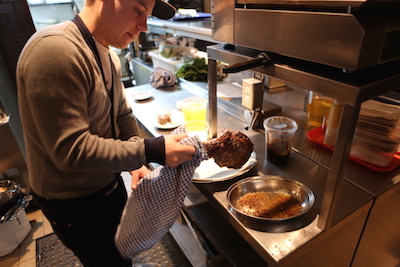











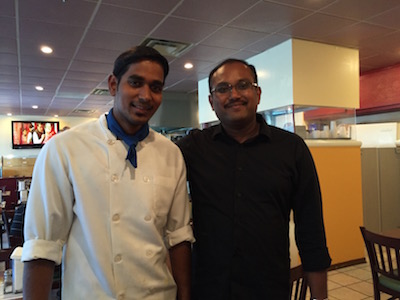
















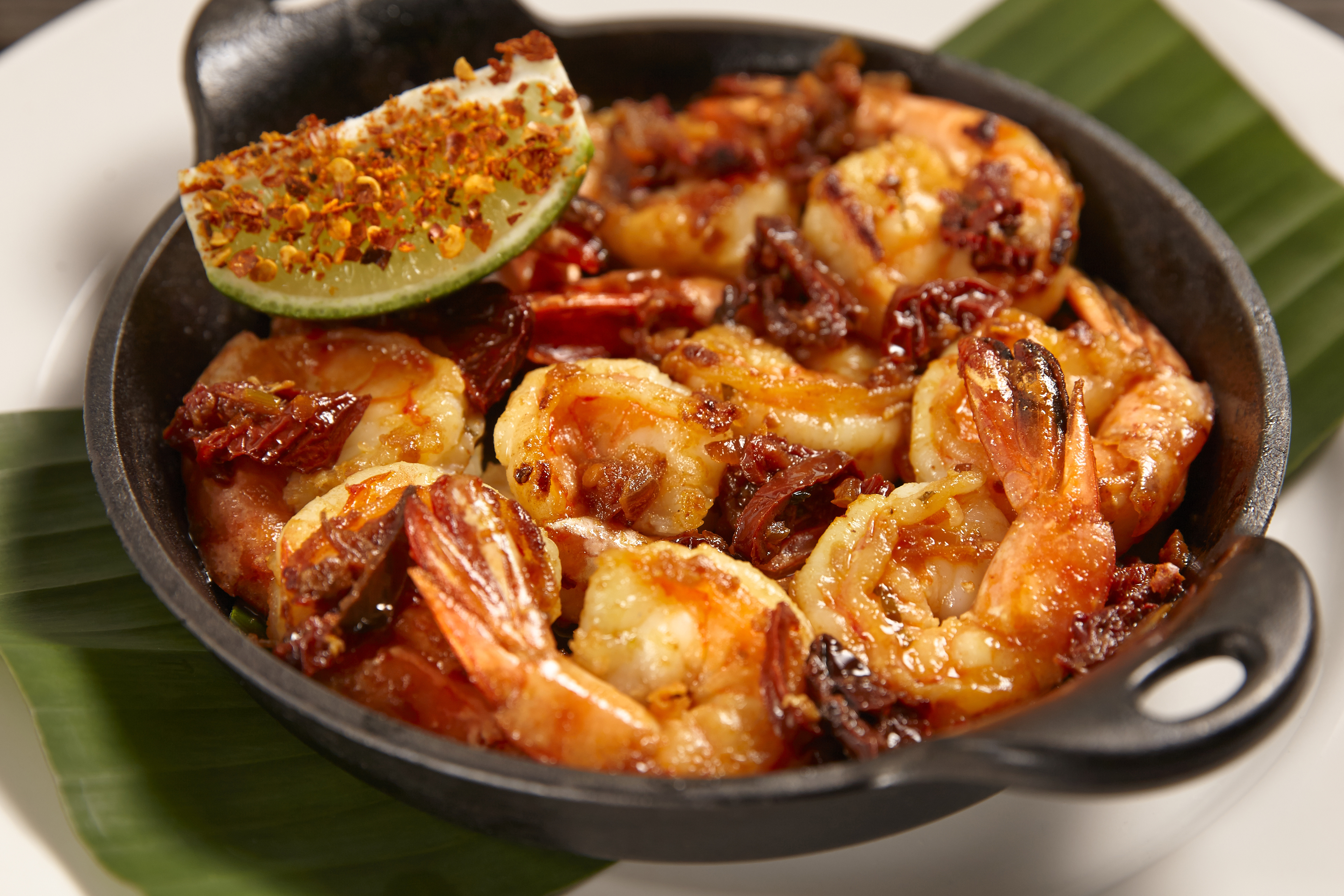
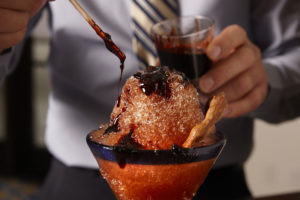


 Gerry Furth-Sides
Gerry Furth-Sides  Barbara Hansen
Barbara Hansen  Chef-owner Alain Cohen
Chef-owner Alain Cohen  Roberta Deen
Roberta Deen  Jose Martinez
Jose Martinez  Nivedita Basu
Nivedita Basu